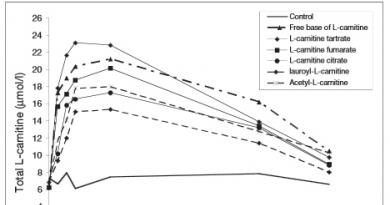It’s not without reason that they say that even the most useful things should be in moderation. Even the intake of vitamin components, which we so diligently love to replenish, should be in moderation.
After all, if you drink vitamins uncontrollably, this can result in the development of hypervitaminosis. And this condition poses a threat to human health.
Vitamin A is used to treat certain diseases; an overdose of this vitamin does not occur often.
Let's look in detail at what can trigger an overdose, what dose must enter the body to cause an overdose, and how to prevent it? Let's look at all these questions in detail.
Vitamin A contains retinoic acid, retinal and retinol. All these components are not stable, and in order to obtain their stability they are combined with ethers.
Retinol is present in large quantities in dairy products, eggs, and liver. It can also be found in some vegetables - paprika, tomatoes and carrots. Vitamin A of plant origin is called carotene.
The following daily requirement of vitamin A is provided for the human body:
- For men – 0.9 mg;
- For the fair sex – 0.7 mg.
The maximum permitted daily dose of vitamin A for adults is 3 mg.
For children, the following daily dose is allowed:
- From birth to 1 year – 0.4 mg;
- From 1 to 3 years – 0.45 mg;
- From 4 years to 6 – 0.5 mg;
- From 7 years to 10 – 0.7 mg.
When is an overdose possible?
Vitamin A tends to accumulate in liver cells. From 10 to 700 mg of this component may be present in the liver. In the liver of animals this amount is even greater.
If a person eats the liver of domestic animals or liver pate in excess quantities, then vitamin A in large quantities begins to accumulate in the body and its toxic effect occurs.
Interestingly, people who live in the north do not eat the liver of a polar bear, walrus or seal. Even if you eat this product once, an overdose of vitamin A can cause death.
Often an overdose of this substance occurs:
- When eliminating acne, when drugs such as Tigazon or Roaccutane are used.
- In the treatment of eye diseases to restore vision.
- In the treatment of skin diseases, problems with hair, nails, as well as infertility, when the use of Aevita is prescribed.
- An overdose can also occur with prolonged use of fish oil.
- Combined use of vitamin A with medications containing estrogen.
- When treating infectious diseases and rickets, increased amounts of vitamin A are prescribed. In this case, its accumulation occurs gradually, and symptoms appear over time.
Overdose symptoms
An overdose of vitamin A can occur in acute and chronic forms.
Taking a dose of 50 to 300 mg provokes acute intoxication. The person begins to vomit violently, and the vomiting is uncontrollable. Added to this is diarrhea, resulting in severe dehydration.

The following symptoms appear on the part of the nervous system: headache, convulsions, blurred vision, and confusion.
The next day after taking a large dose, a skin rash and peeling occurs. The rash is present on the legs, arms, torso and face. The bones in the limbs begin to ache very much.
In case of an overdose, the feet and palms become yellow.
Vitamin A under normal conditions is not present in the blood in its pure form. It is associated with protein components. If vitamin A is present in the bloodstream in free form, this indicates poisoning with it. If it remains in this form for a long time, it will provoke a chronic overdose.
The liver suffers the most from intoxication, because free vitamin A is very toxic. Protein synthesis is disrupted, which impairs blood clotting. There is an increased amount of calcium in the blood, which provokes an increase in pressure inside the skull.
Symptoms of high intracranial pressure:
- The person develops severe headaches;
- There is nausea, severe vomiting;
- The bones begin to ache;
- Cracks appear in the corners of the mouth;
- Peeling appears on the skin;
- The optic papilla swells;
- Baldness is present.
Overdose in children
There are frequent cases of poisoning with the vitamin in question among children. The most dangerous complication in this case is the development of hydrocephalus (a condition in which there is fluid in the brain) and bulging fontanelles.
The liver is damaged, which causes sudden bleeding, the gums begin to bleed, and the nose may bleed.
Consequences of an overdose in a child:
- Body temperature increases;
- There is increased arousal;
- Hair loss begins;
- The child’s appetite worsens, he may refuse to eat altogether;
- Seborrhea occurs.
Overdose during pregnancy
An overdose of this vitamin in position is a rather dangerous condition. If a pregnant woman eats normally, then a food overdose is almost impossible, because the bioavailability of vitamin A is low.

However, if you combine the intake of products that contain this substance in large doses, together with vitamins in capsules or solution, then the risk of developing congenital deformities in the fetus increases.
Intake of vitamin A in excessive doses during this crucial period threatens the development of heart defects in the baby, disturbances in the development of the facial skeleton, stomach defects and other complex consequences.
During pregnancy, the daily intake of vitamin A should not exceed 1 mg.
What to do in case of overdose
If symptoms characteristic of acute intoxication are present, the first step is to induce vomiting. After this, perform gastric lavage and consume activated charcoal.
Other important activities are also carried out:
- Ascorbic acid (5 ml) is administered intramuscularly or intravenously.
- The use of hepatoprotective drugs is prescribed.
- Glucocorticoids are started.
With the simultaneous use of vitamin C and glucocorticoids, the occurrence of overdose will be reduced.
Hepatoprotective drugs must be taken, because vitamin A is toxic to the liver; it destroys the cells of this organ. Among non-traditional methods, milk thistle meal has a good effect.
What to do if overdose symptoms increase
If the stomach has been washed, activated charcoal has been drunk, but diarrhea and vomiting do not go away, plus convulsions have been added to this, then you need to urgently call an ambulance.
The person needs to be taken to the hospital to reduce intracranial pressure. We provide inpatient treatment:
- Intravenous administration of mannitol;
- Intravenous administration of a large amount of glucocorticoids (through a drip).
Conclusions
Vitamin A belongs to the group of fat-soluble vitamins. It takes quite a long time to be eliminated from the body – 21 days. Its effect on the body is strong, can be compared to the effect of a hormone.
An overdose of this substance is quite dangerous. You shouldn't experiment with it. An overdose of plant-based vitamin A (carotene) does not pose any danger. Pregnant women, as well as those who are just planning a pregnancy, should be especially careful when taking vitamin A.



